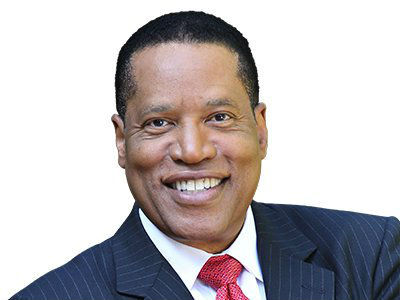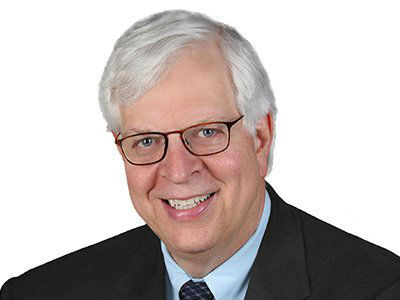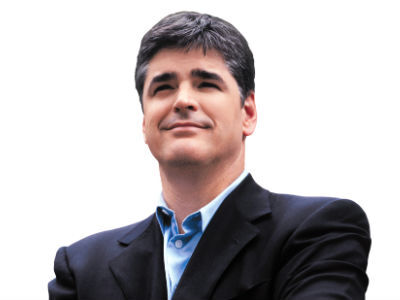What do consumers really want on Black Friday and Cyber Monday? 5 years of Shopify data reveals the trends.
Lifestyle

Audio By Carbonatix
10:00 AM on Thursday, October 23
By Emily Shwake for Shopify, Stacker
What do consumers really want on Black Friday and Cyber Monday? 5 years of Shopify data reveals the trends.
Black Friday may have started as a purely discount-driven add-on to Thanksgiving, but it’s become something much bigger: both literally, as a multiday sales event (Black Friday Cyber Monday, or BFCM), and also culturally, as the time of year when consumer urgency, desire, and value converge. Pent-up demand is released, and consumers are finally ready to invest in big-ticket items, stock up on staples while prices are low, or explore new interests in earnest.
For small and midsize businesses, the ability to spot where consumer attention is heading year after year can help them better position their products, identify untapped opportunities, and make more confident decisions around inventory, messaging, and product development.
“It’s important to understand what is happening in the culture of your target consumer to get a sense of how your category may be impacted and where you can innovate in order to find longevity and staying power,” says Angie Meltsner, founder of Tomato Baby, a cultural insights and trends research studio.
Shopify looked back at five years of global BFCM sales data, highlighting the macro trends that rose to the surface. The goal wasn’t just to reflect what happened, but to help business owners make sense of it, so they can plan where to go next.
Consistent top sellers
Across five years of Shopify BFCM data, some product categories have consistently held strong. These seven standouts have appeared at the top of year-over-year growth lists repeatedly (in no particular order):
- Pet health care
- Baby supplies
- Camera instant film
- Film photo/film digitization service
- Mattresses
- Cosmetics
- Electric skateboards
The continued demand for pet health care and baby supplies reflects essential, high-frequency spending—particularly from millennial and Gen Z consumers entering new life stages. These shoppers are thoughtful and digitally savvy, often turning to BFCM as a time to stock up on big-ticket or high-value essentials at a lower cost.
Cosmetics has remained resilient year after year, buoyed by the enduring appeal of beauty culture, self-care rituals, and TikTok–fueled product discovery. Even as trends evolve—from bold looks to “clean girl” minimalism—makeup and skin care remain an accessible form of indulgence.
The tension between instant film and digitization services reflects a deeper consumer duality: a desire to preserve and streamline memories through digital convenience, and a counter-desire to stay grounded in the physical world. Instant cameras, with their tactile, imperfect charm, offer a nostalgic yet novel way to engage with the present.
Electric skateboards and other micromobility tools speak to growing interest in sustainable, individual transportation—especially among younger consumers navigating urban environments.
Mattresses, meanwhile, are a classic big-ticket item. With significant discounts on offer, many consumers strategically wait for BFCM to make these infrequent but important purchases.
2020: Confinement, care, and a reimagined commute
Trending categories by year-over-year order growth:
- Fashion face masks: +31,933%
- Saute pans: +10,327%
- Hair clippers and trimmers: +2,111%
- Manicure tool sets: +610%
- Cookware sets: +608%
- Sweatpants: +424%
- Jigsaw puzzles: +387%
- Electric bikes: +367%
The COVID-19 pandemic radically altered how—and where—people spent their money. With physical retail shuttered and consumers confined to their homes, ecommerce adoption accelerated dramatically. According to International Trade Administration data, the world saw a 32% year-over-year increase in ecommerce penetration from 2019 to 2020, the biggest single-year jump in the past decade.
Consumer spending shifted just as dramatically. It’s no surprise that fashion face masks and sweatpants saw significant year-over-year order growth, but other surging categories hinted at longer-lasting changes in behavior.
For one, interest in DIY beauty and grooming rose sharply. With salons closed, people turned to tools for cutting their own hair or doing their own nails at home. There was also a noticeable turn toward screen-free hobbies like jigsaw puzzles, which reflected a desire for tactile, analog activities in a time dominated by digital interactions.
The popularity of bundled products (such as cookware sets and manicure kits) reveals a distinctly BFCM-specific behavior: Shoppers are especially drawn to multi-item sets because the discounts tend to be deeper, often saving them hundreds of dollars compared to buying items individually. Additionally, many hold off on big purchases until this weekend, making them especially responsive to high-value deals.
One of the most striking growth areas was electric bikes. With auto prices rising and public transportation becoming a health risk, many consumers turned to e-bikes as a lower-cost, safer mobility option. While public transit ridership fell 73% in the US, total e-bike sales spiked 26% year over year, according to a 2022 Deloitte report. Electronic bikes offered an easy way for people to get around efficiently, and get outdoor exposure and exercise.
2021: Reentry and reconnection
Trending categories by year-over-year order growth:
- Poker chips and sets: +4,468%
- Wetsuit pieces: +1,488%
- Quilting rulers: +883%
- Dutch ovens: +673%
- Swim goggles and masks: +330%
- Curling irons: +315%
- Checked suitcases: +300%
- Carry-on suitcases: +240%
On November 8, 2021, the U.S. government officially lifted its travel ban on international visitors, and consumers left their caves in earnest. A surge in suitcase orders highlighted just how eager people were to hit the road again. TSA checkpoint data supports the sentiment: On November 28—the busiest travel day of the year—screenings were more than double 2020 levels and just 18% below those of 2019.
Shopify’s data also points to a widespread return to social connection. Spikes in poker sets and Dutch ovens suggest a renewed interest in hosting and gatherings. The increase in orders of curling irons also aligns with the return of events.
Still, it would be a misreading to suggest a complete reversion to pre-pandemic norms. Some pandemic-era pastimes—like quilting—proved their staying power. Additionally, consumers invested substantially in outdoor adventure-oriented gear like wetsuits and swim goggles.
2022: Beauty, body, and a break from routine
Trending categories by year-over-year order growth:
- Cosmetic and toiletry bags: +644%
- Power adapter and charger accessories: +583%
- Craft knife blades: +565%
- Boxing and martial arts training equipment: +417%
- Bone conduction headphones: +388%
- Doll and action figure accessories: +236%
- Lip balms and treatments: +226%
- IPL hair removal devices: +217%
As consumers settled into a new rhythm of life post-lockdown, spending shifted toward mobility and self-enhancement. Increases in orders of toiletry bags and power adapters reflected continued growth in travel and hybrid lifestyles. People were on the move again, but often still working remotely or balancing travel with routine. In 2022, digital nomadism was up 131% from 2019 levels, according to data from talent solutions company MBO Partners.
The interest in DIY beauty that started in the pandemic stuck around. Sales of IPL (intense pulsed light) hair removal devices surged, driven by both demand and supply-side innovation. In 2022 alone, the FDA cleared 16 new home-use IPL devices—more than had been approved in the decade prior.
Boxing and martial arts gear followed a similar path. Demand was driven by overlapping trends: the continued popularity of home fitness, growing attention to personal appearance, and a spike in interest in combat sports. UFC CEO Dana White reported the franchise’s fan base grew by 68% during the pandemic, and the International Boxing Association saw a 25% rise in registered amateur and recreational fighters from 2018 to 2021.
2023: Slow hobbies and fast coffee
Trending categories by year-over-year order growth:
- Plug-in diffusers: +3,126%
- Teeth whitening strips: +538%
- Hair styling tool sets: +505%
- Teeth whitening pens: +454%
- Crochet hooks: +431%
- Instant coffee: +342%
- 3D printer filaments: +275%
- Craft cutting and embossing tools: +107%
In 2023, BFCM shoppers revealed two seemingly opposing impulses: a craving for speed and optimization, and a desire to slow down and reconnect with the physical world.
Instant coffee made a comeback—with overall sales growing 7% in the U.S., according to data from market research firm Mintel—as convenience and cost savings met quality. Far from the burnt-rubber brew of decades past, new-wave instant coffee offers complex flavor, convenience, and portability that appeals to busy parents and adventurers alike.
Its naturally higher antioxidant levels compared to brewed coffee, combined with growing interest in alt-coffee formats like mushroom blends, also helped position instant coffee within broader wellness culture. “Wellness culture for sure has become dominant and has reached ultimate heights,” says Meltsner, who cites biometric wearables and the data they provide as a large driver.
Yet while many sought better, faster ways to consume, others leaned hard into slowing down. The rise in sales of crochet hooks, craft cutting and embossing tools, and 3D printing materials point to a continued embrace of hands-on creation.
This is a hobby that likely will stick around, as consumers, especially younger generations, become more interested in ways to proactively improve their mental health and regulate stress levels. According to a 2024 survey of U.K. adults, crafts produced greater life satisfaction than paid work.
Teeth whiteners and hair tool sets also saw a significant uptick in orders year over year, suggesting a continued investment in appearance-focused personal care. “As filtered images of ourselves become more common, people could be trying to improve their appearance to be in line with how they see themselves filtered,” Meltsner notes. The desire to align one’s offline appearance with their online presence continues to shape personal care spending in increasingly nuanced ways.
2024: Analog and togetherness
Trending categories by year-over-year order growth:
- Compact digital cameras: +2,345%
- Embossing stamps: +1,119%
- Pilates reformers: +990%
- Handheld players and recorders: +799%
- Tennis shoes: +452%
- Beach bags: +387%
- Party games: +306%
- Bird feeders: +98%
In 2024, compact digital cameras made a dramatic comeback. The lo-fi aesthetic of the photos aligns with a broader revival of Y2K aesthetics, but the appeal ran deeper. Point-and-shoots offer greater control over photography than smartphone cameras—while getting people off their phones. The more powerful flash makes them better for evening shooting, and physical dials invite users to frame photos through their own creative lens. In an era saturated with AI-enhanced imagery, the imperfect results of digital cameras felt refreshingly human.
Embossing stamps saw a similar rise in popularity, pointing to the desire of consumers to make their mark—literally. Whether used on books, invitations, or fabrics, these tools offered a way to personalize the physical world with care and craftsmanship. It’s part of a broader movement toward premium-feeling, hands-on hobbies that reward attention to detail. “Slow and analog hobbies that require deliberate focus and friction are still growing in interest as people intentionally aim to spend time away from screens and devices,” says Meltsner.
The growth in Pilates reformers tracks with the continuing rise in the workout’s popularity, due in large part to social media’s influence. Pilates was the most-booked workout of 2024, according to data from booking platform ClassPass, retaining its top spot from 2023 but with bookings increasing by 84% year over year.
What to expect for 2025?
Looking at the road ahead, the push-pull between wellness optimization and indulgent escape is likely to shape much of 2025’s consumer behavior. “I think we’ll continue to see interest in wellness-related categories as wellness culture permeates other categories like beauty and even food and beverage,” says Meltsner.
As wearables and biohacking go mainstream, more consumers are investing in products that promise better rest—and by extension, better performance. “Sleep is growing as a wellness status symbol,” Meltsner notes, pointing to smart mattresses, bedroom lighting, and sleep accessories as potential breakout categories.
At the same time, a growing weariness with self-optimization may lead to a swing in the opposite direction. “I do think there is a growing counter-movement to wellness overload where we’re looking for pure indulgence for indulgence’s sake and leisure for leisure’s sake,” says Meltsner. “Not every experience needs to be functional or a method for measured self-improvement.”
Finally, Meltsner points to a growing demand for activities that can’t be outsourced or simulated. “Things like exercise and slow hobbies require some level of embodiment, practice, craft, and a temporal reality in order to engage,” she explains. These pursuits ground people in the present moment, offering friction, presence, and tactile feedback—qualities that are becoming rarer in our increasingly digitized lives, and therefore more meaningful.
In 2025, expect to see consumers continue to seek balance between these extremes: optimizing where it matters, and letting go where it doesn’t.
This story was produced by Shopify and reviewed and distributed by Stacker.

























